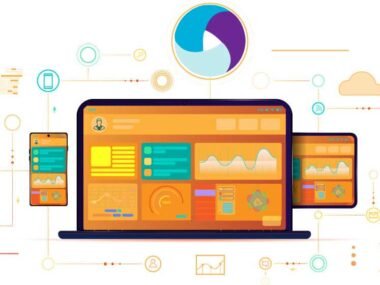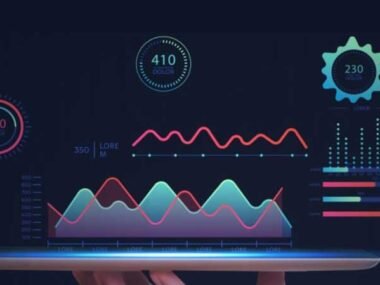Artificial Intelligence (AI) Orchestration is becoming an integral facet of technological advancement, seamlessly integrating various AI processes and solutions to create a symphony of intelligent automation. It represents a crucial leap from standalone AI applications to cohesive, interconnected AI ecosystems that drive efficiency, innovation, and competitive advantage. In the rapidly evolving landscape of digital transformation, understanding and leveraging AI orchestration can be pivotal for businesses aiming to stay ahead. Below, we will explore the components, applications, and future of AI orchestration. Keep reading to embark on this enlightening journey through the world of AI efficiencies.
Understanding AI Orchestration in Modern Technology Ecosystems

Alt text: A desk featuring a laptop and a computer, illustrating a workspace setup for what is AI orchestration.
AI orchestration is all about coordinating different artificial intelligence tools so they work together seamlessly. Instead of using isolated AI solutions, it connects them to share data, improve learning, and boost performance across the system, much like a conductor guiding an orchestra. This approach leads to smarter decisions and more efficient operations by aligning each tool’s strengths within a larger framework.
So, what is AI orchestration at its core? It’s the system that enables smooth communication between AI models, managing tasks and data flows without conflict. BA Insight offers solutions that support this orchestration, helping organizations build adaptive, secure ecosystems that evolve alongside their goals.
Key Components and Technologies Powering AI Orchestration
AI orchestration relies on foundational technologies that enable seamless intelligent workflows. Core components include machine learning models, robust data storage systems, and APIs that allow data exchange across diverse platforms. Machine learning platforms use algorithms that evolve through data, while data pipelines clean, transform, and deliver relevant information to AI models efficiently. Integration middleware connects legacy systems and modern tools, ensuring smooth communication and interoperability across the stack.
Cloud services provide scalable computing power essential for managing and deploying AI resources. This infrastructure allows organizations to support increasingly complex AI operations with flexibility and efficiency, positioning orchestration as key to unlocking AI’s full potential.
The Role of AI Orchestration in Streamlining Business Operations
AI orchestration significantly enhances business operations by streamlining processes and boosting efficiency. It coordinates various AI tools to automate tasks like customer service and predictive maintenance, reducing costs and freeing employees for strategic work. Businesses can deliver personalized customer experiences by integrating data across platforms, improving satisfaction and loyalty, especially in e-commerce and banking.
In supply chains, AI orchestration optimizes forecasting, inventory, and logistics, enabling agility and minimizing waste. It also allows organizations to leverage big data more effectively, breaking down silos and generating cross-functional insights. This integration supports smarter, organization-wide decision-making and helps align operations with evolving market demands.
Challenges and Considerations in Implementing AI Orchestration

Alt text: A person typing on a laptop, focused on challenges in AI orchestration implementation.
Implementing AI orchestration presents several challenges despite its potential benefits. Integrating diverse AI systems often proves difficult due to compatibility issues, requiring strategic coordination for seamless interaction. Data privacy and security are also major concerns, as orchestrated systems involve data transfers that heighten exposure to breaches, necessitating strict security measures and regulatory compliance.
A significant talent gap in AI and data science can hinder deployment, making workforce development or third-party collaboration essential. Ethical concerns and the risk of job displacement due to automation must be addressed, with organizations urged to adopt responsible AI practices that consider broader societal implications.
Future Trends and Developments in AI Orchestration Tools and Methodologies
AI orchestration tools are rapidly evolving, with trends pointing toward self-healing systems capable of autonomously managing and resolving workflow issues. Improved interoperability standards are making it easier to integrate diverse AI tools across platforms, allowing organizations to build customized solutions tailored to their needs.
Methodologies are also advancing, with increased adoption of DevOps practices enhancing agility through continuous integration and delivery of AI features. Blockchain technology is emerging as a means to ensure transparency and trust in AI processes by offering immutable audit trails. These innovations are collectively driving the development of more intelligent, adaptable, and efficient orchestration systems.
Altogether, AI orchestration stands as a beacon of modernization, enhancing how businesses harness the power of artificial intelligence. It offers a path to streamlined operations, informed decision-making, and ultimately, unprecedented levels of efficiency. As we embrace the future, the deepening integration of AI orchestration will undoubtedly shape the frontier of innovation across industries.









